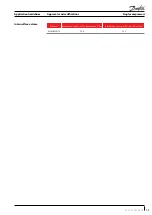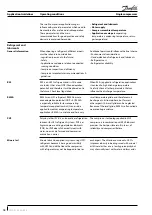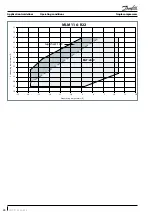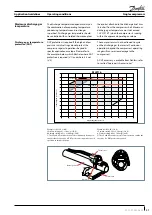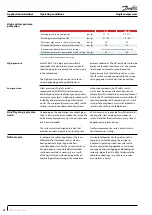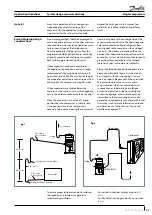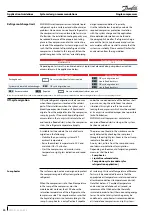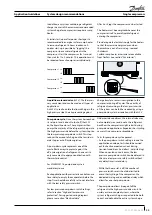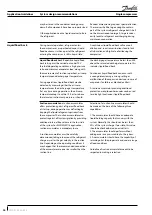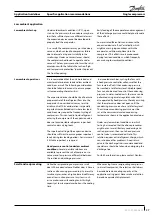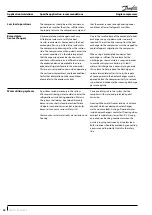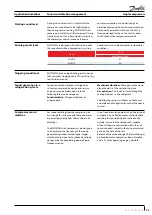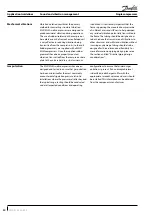
System design recommendations
Essential piping design
considerations
Proper piping practices should be employed to
ensure adequate oil return, even under minimum
load conditions with special consideration given
to the size and slope of the tubing coming
from the evaporator. Tubing returns from the
evaporator should be designed so as not to trap
oil and to prevent oil and refrigerant migration
back to the compressor during off-cycles.
If the evaporator lies above the compressor
the addition of a pump-down cycle is strongly
recommended. If a pump-down cycle were to
be omitted, the suction line must have a loop at
the evaporator outlet to prevent refrigerant from
draining into the compressor during off-cycles.
If the evaporator were situated below the
compressor, the suction riser must be trapped to
ensure the oil return to the compressor (see fig.1).
When the condenser is mounted at a higher
position than the compressor, a suitably sized
U-shaped trap close to the compressor is
necessary to prevent oil leaving the compressor
from draining back to the discharge side of the
compressor during off cycle. The upper loop also
helps avoid condensed liquid refrigerant from
draining back to the compressor when stopped
(see fig. 2). The maximum elevation difference
between the indoor and outdoor section cannot
exceed 8 m. System manufacturers should specify
precautions for any applications that exceed
these limits to ensure compressor reliability.
Piping should be designed with adequate three
dimensional flexibility (figure 2). It should not
be in contact with the surrounding structure,
unless a proper tubing mount has been installed.
This protection proves necessary to avoid
excess vibration, which can ultimately result
in connection or tube failure due to fatigue
or wear from abrasion. Aside from tubing and
connection damage, excess vibration may be
transmitted to the surrounding structure and
generate an unacceptable sound level within that
structure as well (for more information on sound
and vibration, see the section on: “Sound and
vibration management”).
General
Successful application of scroll compressors
is dependent on careful selection of the
compressor for the application. If the compressor
is not correct for the system, it will operate
beyond the limits given in this manual. Poor
performance, reduced reliability, or both may
result.
0.5% slope,
4 m/s or more
0.5% slope,
4 m/s or more
U-trap
U-trap, as short as possible
U-trap, as short as possible
max. 4 m
fig.1
max. 4 m
8 to 12 m/s
To condenser
Evaporator
Condenser
HP
U-trap
3D flexibility
Upper loop
LP
fig. 2
To ensure proper refrigerant and oil circulation,
the speed limits in all pipes are generally
recommended as follows:
• For vertical suction gas velocity: around 8-12
m/s;
• For horizontal suction gas velocity: no less than
4 m/s;
23
FRCC.PC.035.A5.02
Application Guidelines
Single compressors









